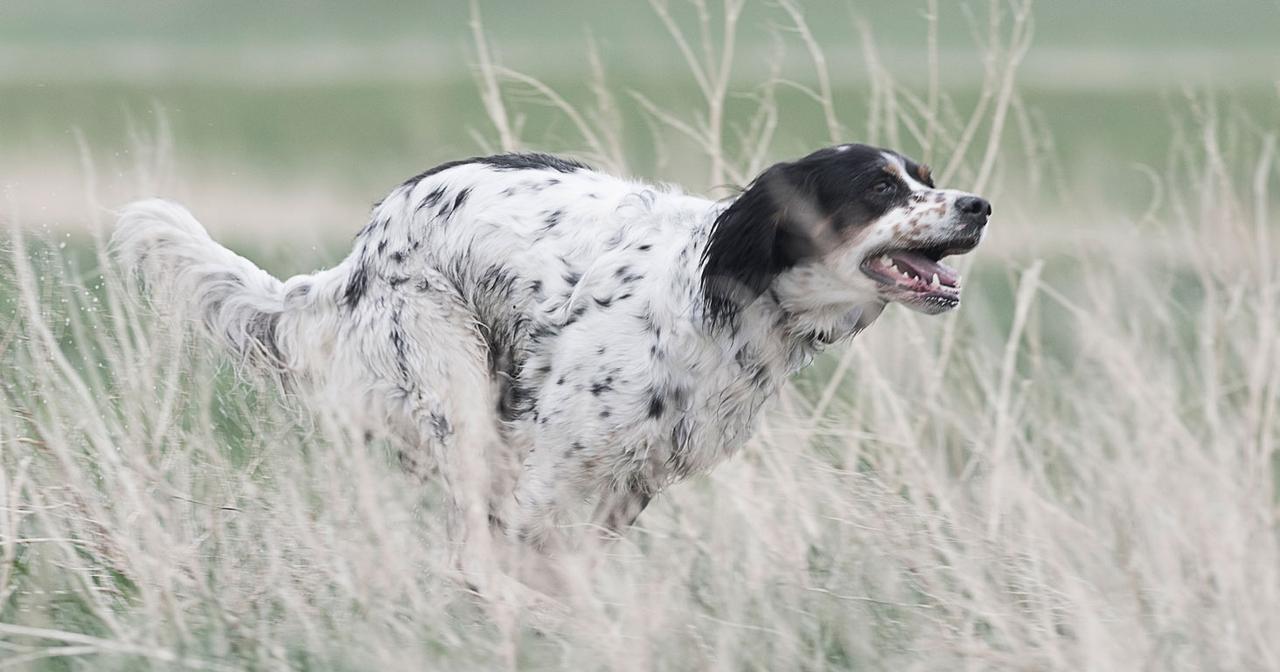
Think Smart when it Comes to Summer Training
Posted by Shawn KinkelaarThe list of things you can work on with your pointing dog during the summer months to prepare for the upcoming hunting season is plenty long. In addition to training and/or revisiting things from the last hunting season that need improvement, this is also a time to keep up with conditioning so your dog can build up endurance to better handle long days this fall.
It’s also important to recognize that there are downsides to summer training, so you need to know when to wait for a better time. A simple rule of thumb is this: Anytime your training progress is going backwards instead of forward, it’s time to shut down the practice session.
There are a number of conditions will put a kink in your training plans. Those that top my list include poor scenting conditions and fields that harbor dangerous vegetation. Let’s look at situations in which your dog is better off resting in his kennel than being in the field.
During training, I want to make sure my dog is working in good or at least average scenting conditions. I don’t train in 30 mph winds, and I don’t train when it’s hot and dry. When your dog can’t get a good fix on bird scent, or when he’s running with his tongue hanging out, he’s going to make mistakes. This means you’re going to get frustrated and your dog isn’t going to learn much. This is when your training is going to go backwards, so like I just said, shut it down for the day.
If I’m forced to run in a competition or if it’s hunting season and these are the conditions we’ve been given, that’s different. In those situations you have to make the best of it and get out there. But I don’t see any reason to train when there’s a risk of creating new problems.
During a stretch of hot weather, one obvious solution is to get out there at first light and try to get some productive work in while there’s some moisture on the ground and the air temperature is relatively low. If you have the chance to work in some 60-degree temps early in the day, that’s great. Once that thermometer climbs into the 70s and beyond, you’re not going to get the best out of your dog.
I know people who routinely train every day during summer all the way into the early afternoon, even when the temps are hitting the 80s and 90s. To me, that’s just punching a clock. My philosophy is that one quality training session beats a whole week of working a dog in poor conditions.
The second thing you need to pay attention to, especially during the summer months, is whether there is a prevalence of any type of spear grass in your training areas. Spear grass, which is sometimes also called needle grass, is often used as a generic term for any of dozens of different types of weeds that have sharp seeds. These seeds can work their way deep into a dog’s body from almost any point of entry, and sometimes they can even migrate throughout the dog’s system and end up in the lungs. When the dog’s body reacts to the foreign object, the result can be pneumonia or even death.
Although seeds can cause problems at any time of year, when it’s hot and your dog is running with his mouth open and tongue hanging out, he’s obviously increasing the number of seeds he’s inhaling, thereby increasing the chances of creating a health problem.
There’s not a lot we can do to protect our dogs from spear grass, but this is no reason to invite the problem. I encourage everyone to educate themselves on how to identify the weeds that are known to be dangerous to dogs. That way you can at least take notice of fields that are overrun with this type of growth and avoid them.
Don’t read any of this and think that I’m somehow opposed to summer training. I’m just like you and want to get in as much work as possible prior to fall. But be smart about when and how you train so that your dog is getting the maximum benefit from these off-season sessions.

Shawn Kinkelaar
Effingham, IL
Shawn Kinkelaar was born and raised in the town of Effingham in central Illinois. Kinkelaar grew up hunting quail and pheasant over pointing dogs with his grandfather and uncle. He began field trialing in the early 1980s and in the late 1980s he began working for and with several of...
Related Products



